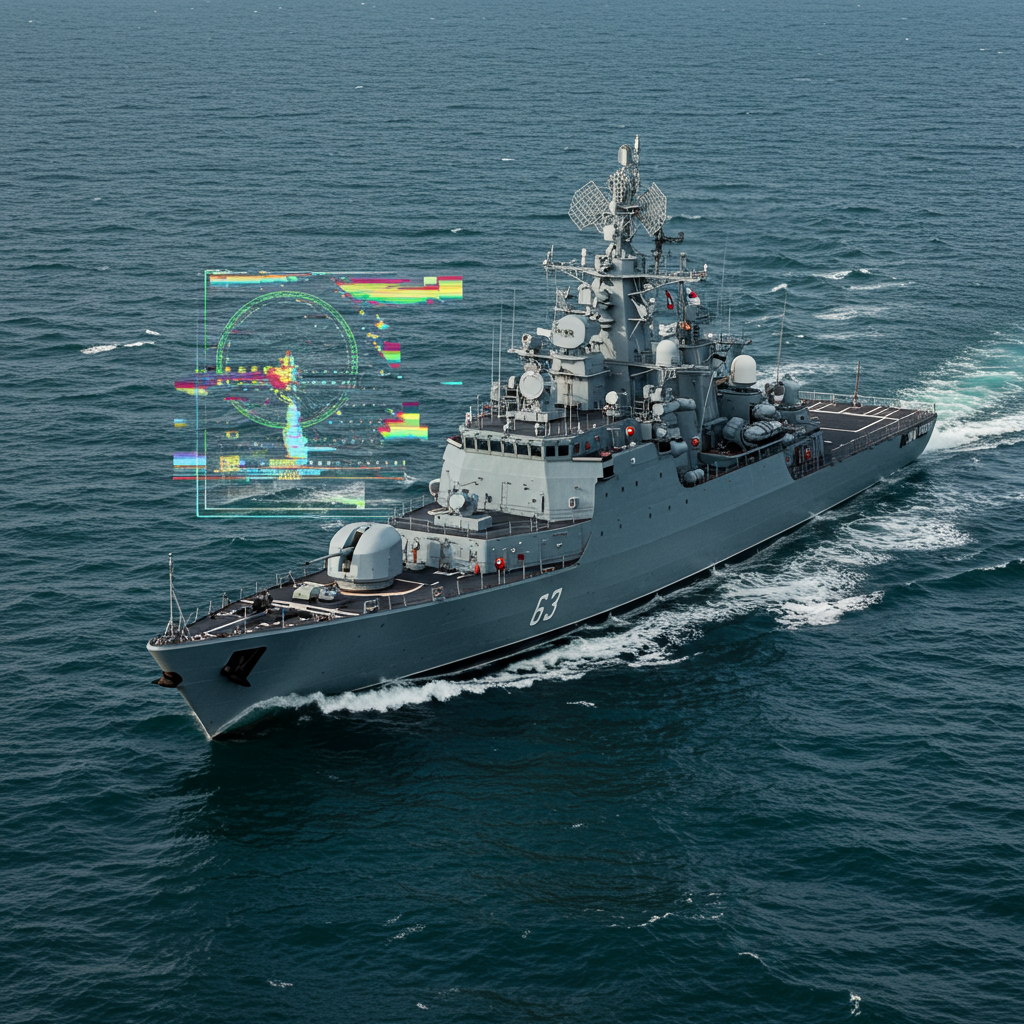A Russian naval warship actively concealed its identity by broadcasting a fake signal while transiting the busy English Channel alongside two oil tankers sanctioned by the UK, a BBC Verify investigation has revealed.
The vessel, identified as the guided-missile corvette Boikiy, transmitted a false identification code on Saturday, June 20th, as it sailed through the waterway. On standard maritime tracking websites, this made the Boikiy falsely appear as other ships that had previously used that specific code.
BBC Verify was able to definitively identify the warship despite the deception. By combining satellite imagery, tracking data, and even webcam footage capturing the vessel passing under the Great Belt Bridge in Denmark, analysts matched the unique size and shape of a 100-metre-long naval ship to the generic identification signal, confirming it was indeed the Boikiy.
Escorting Sanctioned Tankers
The Boikiy‘s unusual passage occurred while escorting two oil tankers, the Sierra and the Naxos. Both tankers are recognised as part of Russia’s “shadow fleet” – a network of vessels often used to transport sanctioned oil with intentionally obscured ownership. The Sierra and Naxos had reportedly travelled from India, through the Suez Canal and across the Mediterranean, meeting the Russian warship at the mouth of the Channel on June 20th. The Naxos had even waited several days at the Channel entrance for the corvette’s arrival before proceeding.
Experts suggest the military escort and the use of deceptive tactics were likely prompted by recent Western pressure and sanctions targeting Russia’s shadow fleet operations.
“The action seems designed to deter the UK and other Nato states from attempting to board and, or, seize these vessels,” noted Dmitry Gorenburg, a senior research scientist at the Center for Naval Analyses. He added that the presence of a military escort significantly “heightens the risk of confrontation and further escalation.”
This follows a previous incident in May where a Russian Su-35 fighter jet flew close to a shadow fleet vessel and entered Estonian airspace after an attempted interception by Estonia, which suspected the ship of carrying sanctioned oil.
Unusual Deception Tactics
While military vessels often turn off their Automatic Identification System (AIS) signal to avoid detection, actively broadcasting a false or generic identifier is considered highly unusual. Frederik Van Lokeren, an analyst and former lieutenant in the Belgian navy, described the Boikiy‘s actions as “very, very uncommon” for a Russian naval vessel.
The Boikiy‘s movements were tracked by open-source intelligence analysts after it left West Africa in June, where it had been on a diplomatic mission, including a stop in Guinea. It initially sailed without activating its AIS, but briefly broadcast a generic identification number (400000000), sometimes used for safety alerts without full identification, near the Canary Islands. Satellite imagery at that point also showed a vessel matching the Boikiy‘s dimensions using this generic ID.
Royal Navy Shadowing
A UK defence ministry source confirmed that the Royal Navy shadowed the Boikiy as it made its way through the English Channel. Satellite images reviewed by BBC Verify appeared to show a ship trailing the Russian corvette during its transit, although its identity could not be definitively confirmed from the imagery alone.
Following their passage through the Channel, all three vessels – the Boikiy, Sierra, and Naxos – continued sailing towards the Baltic Sea. The Boikiy maintained its false AIS marker as it passed under the Great Belt Bridge, where webcam footage provided a clear view confirming its identity as a naval vessel.
The ultimate destination of the ships remains unclear, though they are believed to be heading towards ports in mainland Russia or the exclave of Kaliningrad. The incident highlights the increasing tensions and unconventional tactics being employed in international waters as a result of sanctions and geopolitical shifts.




